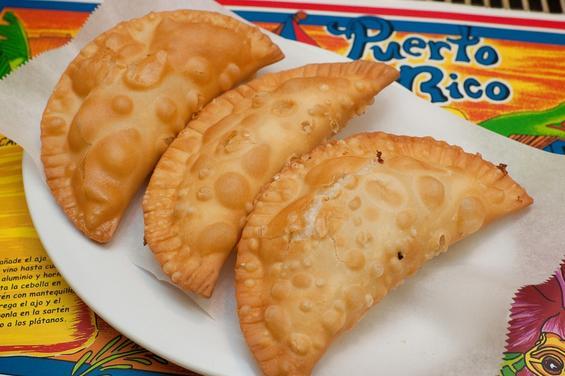Food is often called a universal language that brings people together. There is much diversity among Hispanic cultures, but we can find some familiar experiences in the foods that we eat, and how we eat them. Living on the U.S., Mexican border I see the similarities between many popular Mexican dishes and the Puerto Rican staples my mother would prepare. Here is a look at three standard Puerto Rican dishes and their counterparts found in traditional Mexican, Cuban, and Dominican cuisine.
1. Empandas/Empanadillas (meat turnovers)

Empanadas are a staple of Hispanic cuisine, but there are many different ways to prepare them in different countries. They’re stuffed pastries that are either baked or fried. In Mexico, empanadas are popular breakfast items filled with cheese, chicken, beef or chorizo. They are also made as a dessert that may be filled with cream, sweet potato, pumpkin or other fruit fillings.
In Puerto Rico, they are referred to as empanadillas. Puerto Ricans also make a dish called empanadas, but that is more of a breaded and fried meat like a schnitzel. Empanadillas are prepared similarly and feature many of the same fillings as their Mexican counterparts. My mother always used flour shells for our fried empanadillas. She usually stuffed them with seasoned beef, potatoes and corned beef, with some diced plantains for an added sweetness.

Empanadillas
2. Bistec encebollado (steak and onions)

Bistec (orbistec encebollado) is a tasty dish where the main player is trimmed sirloin steak marinated in combination of vinegar, garlic, pepper and adobo and served with onions. You fry up the steak and the onions, taking care to keep the onions from becoming transparent. The steak can be served with a side or rice and your choice of beans.

Puerto Rican style bistec is prepared mostly the same way, the big difference is that the steak is cut into strips before marinating rather than being whole or cubed. This can give it a more shredded texture while cooking, which might not be aesthetically pleasing to some. You can serve with tostones (fried plantains). Definitely one of my favorite meals ever!
3. Pernil (roast pork shoulder)
Pernil is something that my family usually saves for the holidays, specifically Christmas dinner. My parents cook it in the traditional Puerto Rican style – taking the pork shoulder (or any large cut of pork), cutting away some of the fat on the top and leaving an edge still attached. We cut several slits along the meat and season it in a way so that the seasoning also enters the cuts. OIives are added into some of the cuts. After that, cover it up and refrigerate it for 24 hours. The next day, we let it get back to room temperature before putting it in the oven.
Dominican style pernil is prepared largely the same way. As with the empanadas and the bistec, the differences are subtle and mainly in what you serve the pernil with, and what kind of extra ingredients you decide to include based on personal preference. Some Cuban chefs use onions, yucca (boiled or fried) and lime slices.
Trying new foods is great fun, but it’s a lot easier to be open to some things when you see the similarities to dishes you’re already familiar with. Buen provecho.


Pingback: The 11 Best Tacos in London (Or, Good Mexican Food Is Hard to Find)